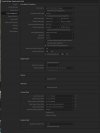Don’t beat yourself up. This is truly complex stuff.
VIMEO and other streaming services are not really destinations. They take your files, re-encode them, and serve them out to their final destinations - tvs, tablets, projectors etc. Each of these have their own specific display capabilities, as well as limits caused by the speed of the downlink they are connected to.
The servers actually create several versions of what you send up to them, and serve the one best suited to the end user. If the end user has a HDR capable display, it will send out a HDR version, otherwise it generally serves out a SDR rec 709 version at whatever bit rate the download connection will support. It will choose 4K, HD or even SD depending on its test of the network speed. There is almost nothing you can do as the creator to change this.
A key requirement for a device to display HDR is the capability to display a brightness of at least 1000 nits. HDR will not display correctly or at all if this isn’t met.
















